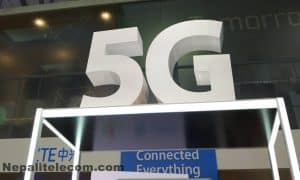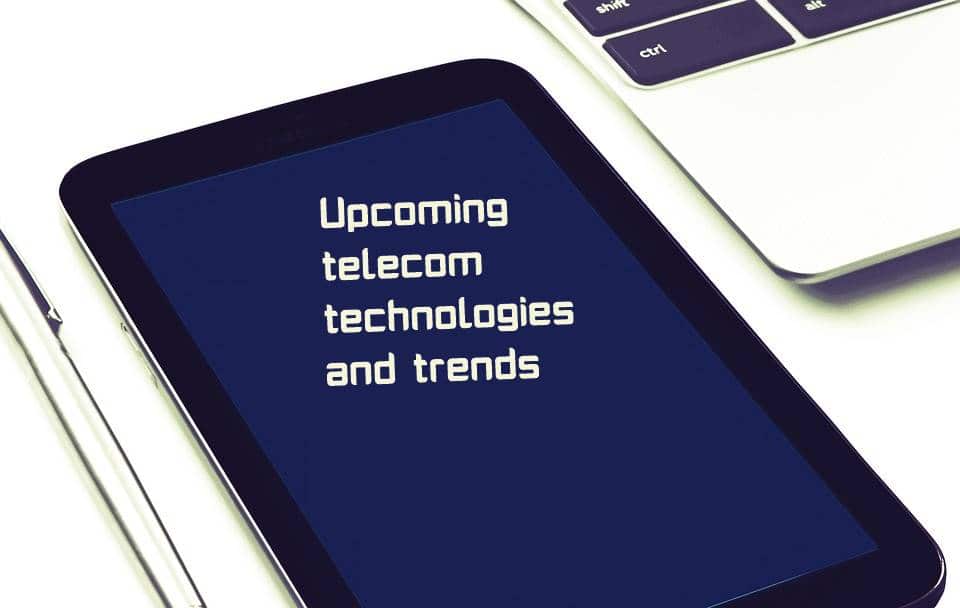We’re moving closer towards the end of another decade; i.e 2020, but with respect to the telecom industry, great achievements have been recorded, and we’ll be discussing the upcoming telecom technology and trend in 2020.
With the proliferation of new and cutting-edge technologies embedded in the recent mobile devices, we look forward to having futuristic smartphones that will be equipped with impressive tools in order to ease our tasks and increase efficiency by the year 2020 and beyond.
With the rate at which the telecom industry is fast evolving due to constant improvements in the systems that are being developed, it becomes a bit of a difficult task to watch out or stay updated with the latest telecom trends.
In this article, We have been more prepared to bolster you up so that you can stay current with the most significant Telecom technologies 2020, so here you go:
5G Network
The 5G technology was the trending topic of this year’s world’s largest tech gathering by Consumer Electronic Show (CES) and Mobile World Congress (MWC).

The 5G has the potential to reshape the entire wireless tech industry in the near future, and hopefully for the good of our telecom technologies 2020.
ALSO READ: What is 5G and services with it?
Also, this technology is expected to be fully implemented into our devices by 2020, due to the interest shown by both smartphone manufacturers, telecommunication companies and the end-users.
As the 5G network becomes implemented, users are going to experience faster broadband speeds with more network reliability from both wireless and mobile devices.
It will also foster the proliferation of networking technologies across the edges of our cities as well as within remote locations.
The 5G tech is not only promising more speed for easier data transfer but also has a great role to play for connected devices including the autonomous vehicle of the automotive industry. The faster speed, lower latency, higher connection density, higher bandwidth opens up a plethora of opportunities for vertical industries.
With the advancements looked upon by car manufacturers, especially now that the concentration in driverless cars is increasing even when they require real-time location data.
Many of us believe that the 5G network will make our mobile devices to go faster, but it’s also important to know not only that but every other technology that uses the network will get faster with 5G.
Increment of mobile connectivity
As the developed world is pushing for 5G and several other verticals opened up by it, some of the developing countries are still struggling to connect the unconnected in the rural areas. Industry estimates to connect 1 billion more mobile users in 2020 with the expansion of mobile networks globally.

The increase in mobile subscribers will definitely add up the no of internet-connected users, including the broadband connection. With the Global smartphone penetration to reach more than 70%, the video content traffic in mobile will also boost highly.
Augmented and Virtual reality
With the advent of newer telecom technologies, Augmented and Virtual reality have the potential to change the way we interact with the environment and people run the operations in the industry. The computer-generated simulation creates a virtual sense of presence that enables virtual traveling, shopping, entertainment, remote support, training and much more. Telecom companies themselves can find solutions to tackle complex maintenance issues using immersive technologies like AR, VR. They can also simplify the checkup of the issues in a very short period of time.
AR embeds the digital image with that of a physical environment while VR creates another world to immerse the person using it.
Artificial intelligence and Automation
The key driver of the telecom business in the coming days is Automation, Automation, and Automation. Using Cloud computing and big data analytics, a telecom operator can use business intelligence to boost up their revenues. The possible opportunities with automation are infinite, which only depends on the pace of the learning algorithm to benefit the telcos.
Gone are the days when people do stuff manually. It has already started in the telecom sector to make use of the intelligence for their day to day operations and business handle. The level of automation that we can predict for the coming days is pretty huge. You can see telcos using a digital assistant and Chatbots for the effective customer contact center.
The automation of business and amalgamation of existing labor with AI technology also helps to rightly predict demand and produce high-quality products/services that will ultimately produce good results. This general rule holds true not only in the telecom sector but in all sectors which could gather the digital data for the analytics.
More digital services
Due to the decline in their core revenues, telecom operators are seeking multiple ways to make up for those lost revenues. Digital service is one of those ways to recover the revenues of telcos. The digital services that telecom operators are providing now like the Cloud storage, Video/ TV service will mountain highly with the addition of services like mobile money, Smart connection (for better lifestyle) and more.
Spectrum Sharing
The telecom operators has already started sharing spectrum for the operation of 2G, 3G and 4G technologies. Now using the similar concept, all the telecom operators (or interested ones) in a region or a locality or even a country can share the spectrum as per their need. Spectrum being a scarce and expensive resource, also contribute one of the biggest operation cost for telcos. And there is also complain for the inefficient use of such costly resource.

Making the spectrum sharing dynamic, will definitely help to get more spectrum share as per their requirement and customer demand. It gives better results only if the sharing spectrum is of adequate quantity for a congestion-free and stable mobile network. Regulators seek several ways to open more spectrum for 4G and 5G networks, one of the spectrum sharing techniques being the CBRS (Citizen Broadband Radio Service) model in the US for 3.5 GHz.
Wi-Fi 6
As far as the latest Telecom technologies 2020 is our focus, then Wi-Fi 6 is worth mentioning.
It is indeed the next generation of wireless technology, proposed to offer a more standardized wireless functionality even in Wi-Fi-crowded areas, in addition to other features of which we’re going to have a look at some of them here.
It may be amazement if I tell you that the Wi-Fi 6 is yet to be out, but set to be launched before the year 2019 runs out (just before the year 2020 sets its foot ); a statement realized from Wifi Alliance, the voluntary overseers of wifi technology.
WiFi 6 routers are already available, but you should know that those devices that have been developed to support the WiFi 6 standard are based on the experimental 802.11ax standard.
Since those early WiFi 6 devices support the draft version, it is likely that they’re going to have limited features when compared to the final touch of WiFi 6 that’ll be released before the year 2020 clocks in.
Thankfully, rumors have it that the changes between the drafted wifi 6 that’s already out and the official one which is yet to be released are going to be little, though we’re going to testify that in the future.
One outstanding feature of the yet to be released Wi-Fi 6 is that it’s likely going to be 3x faster than the current WiFi 5 in terms of data sharing.
It is also guaranteed to provide wider wireless coverage, with the ability to connect more users to the same network.
As the need of making wireless connections increases, we’re expecting the new WiFi to as well drastically reduce the need for wires (if at all they’ll still be needed) for telecom technologies 2020.
GPS and its Alternatives
Efficiency in the Global Positioning System (GPS) is one of the telecom technologies 2020 has plans for, and it’s alternatives are also facing improvements.
Recently, countries like Japan, India, and others are being more focused on positioning systems other than the GPS, this is why they’re launching new satellite systems to achieve their goals.
Not just positioning satellites into the orbit as other countries do, countries like China are ordering their local mobile manufacturers to preload their smartphone devices with alternatives to GPS technology like the Beidou Chip. This is why you can find brands like Xiaomi, Huawei and many others equipping their smartphones with the Beidou tracking technology.
Moreover, navigation tools and software are being improved and standardized to serve both the end-users as well as organizations.
IoT outlook
When we talk about device connectivity, 2020 will be a year with high global data connections, hopefully ever.
This would mean that the volume of data will soon be counted in zeta bytes, as opposed to the current exabyte volume yearly.
Since the Internet of Things (IoT) defines a very novel portion of the entire telecommunication industry, ISPs (Internet Service Providers) will be able to attain a 30:1 machine to human communication, and therefore increase their range of worldwide subscribers for improved Telecom technologies 2020.
Conclusion
When it comes to the Upcoming Telecom Trends in 2020, the ones we’ve mentioned here are just a tip of an iceberg, as there are more amazing and futuristic telecom technologies 2020 had been promising us.
Moreover, the above mentioned are among the most spoken about and had driven the attention of most technological companies, and the users. So we believe this is because those tech trends have a greater potential as well as an influence towards reshaping how we’ll see the entire telecommunication industry in the upcoming decade.
When these technologies become fully implemented, we expect to experience a boom of improvement in terms of accuracy, speed, faster mode of connectivity among many other benefits.
Therefore, we’ll keep our ears down to the floor, as we wait for more upcoming Telecom technologies this 2020.













